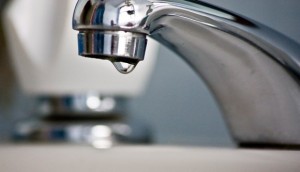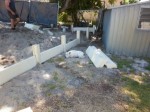
Few things can be more irritating than the drip-drip-drip of a leaking tap, usually in the middle of the night. A constant drip also wastes many litres of water and will stain a sink or bath after a time. All you need to fix the drip is a screwdriver and an adjustable wrench, plus a replacement washer. For most baths and mixer taps you need 118mm washers and 12mm fits most sink and basin taps. The most common household taps are classified under bib-cock, pillar-cock, recess or flange stop, hose-cock and stopcock fittings. Basic operation is similar in all types. First shut off the water either at the tap on the rising main for mains-fed taps or at the appropriate stop tap. If your water system has no stop taps turn the water off at the main and open all the cold taps to drain the water from the pipes. Make sure the heating is turned off before you drain water from a water heater.
Once you have turned off the water supply, open the tap fully. If there is a cap, screw it out or if it is just clipped in, prize it out with a thin screwdriver. The tap may have a shield or cover which should be removed. If using a wrench, wrap a piece of rag or tape around the part of the tap being unscrewed to avoid damaging it. This applies to a bib-cock assembly as in Diagram (A), where the barrel assembly screws out in one piece.
Some taps have a combined handle and cover with a nut holding the cover to the spindle. This has to be undone before you can lift off the cover. If the tap has no nut, open tap fully and continue unscrewing to release the cover. Once you have unscrewed the top portion (which contains the handle spindle), you will see a hexagonal shaped head on which the washer sits. The washer usually drops out into the tap body as the top portion is unscrewed. This can then be replaced with a new washer of the same size. In many taps, the washer is secured to the jumper by a nut or screw. Remove the nut or screw and replace the washer. The washer can be of leather, fibre, or plastic, the most common being neoprene. You can also buy a washer that is fixed to the jumper permanently. This is called a jumper valve. If you are fitting a new washer only and not a complete washer assembly, the burring on the thread of the washer assembly must be carefully filed off (The burring is there to prevent accidental unscrewing). Once the new washer is in place on the old washer assembly or jumper body, replace the retaining nut firmly but do not over tighten it. Then reassemble the tap but before tightening everything well, smear the thread with Vaseline or petroleum jelly. Tighten with hand pressure only. The water supply can then be turned back on and the repaired tap allowed to run gently for a while to remove any air trapped in the water pipes.
Reseating a tap Diagram (B).
If the tap continues to drip even after you replace the washer, the seating is probably worn. A plumber can regrind the washer seating for you or you can purchase a tap reseating tool to reface the seat yourself. This tool has cutting teeth. You insert the tool in the tap and install the packing nut over it then turn the handle to screw the tool down against the tap seat. The cutting teeth then grind the seat smooth. Cheek that it is smooth and shiny before reassembling the tap. There is also available a special seating washer that simply fits into the original seat and gives a smooth seat for the washer to sit on See Diagram (A).
Replacing an “O-Ring” or a jumper valve.
If the water leaks from around the handle of the tap, you’ll probably find that the “O-Ring” needs replacing Just follow the steps in Diagram (C), from 1-8, and you’ll find it a rather simple process Remember to wrap the tap in rag or tape to protect the chrome if you are using a wrench.
However, some older style taps have a “gland nut” positioned just below the spindle (see Diagram (C) step 6), and this could also be the cause of the “handle leak”. Try tightening the nut about a quarter turn with an adjustable wrench.
Put the tap back together and turn it on. If it still leaks you’ll have to replace the “0-Ring”.
Sometimes the tap will leak from the spout. This is probably caused by a worn washer commonly called a jumper valve (see Diagram (C) step 7). It is easily replaced, just follow the steps to remove the barrel assembly and the washer will simply drop out. Replace it and reassemble the tap.


